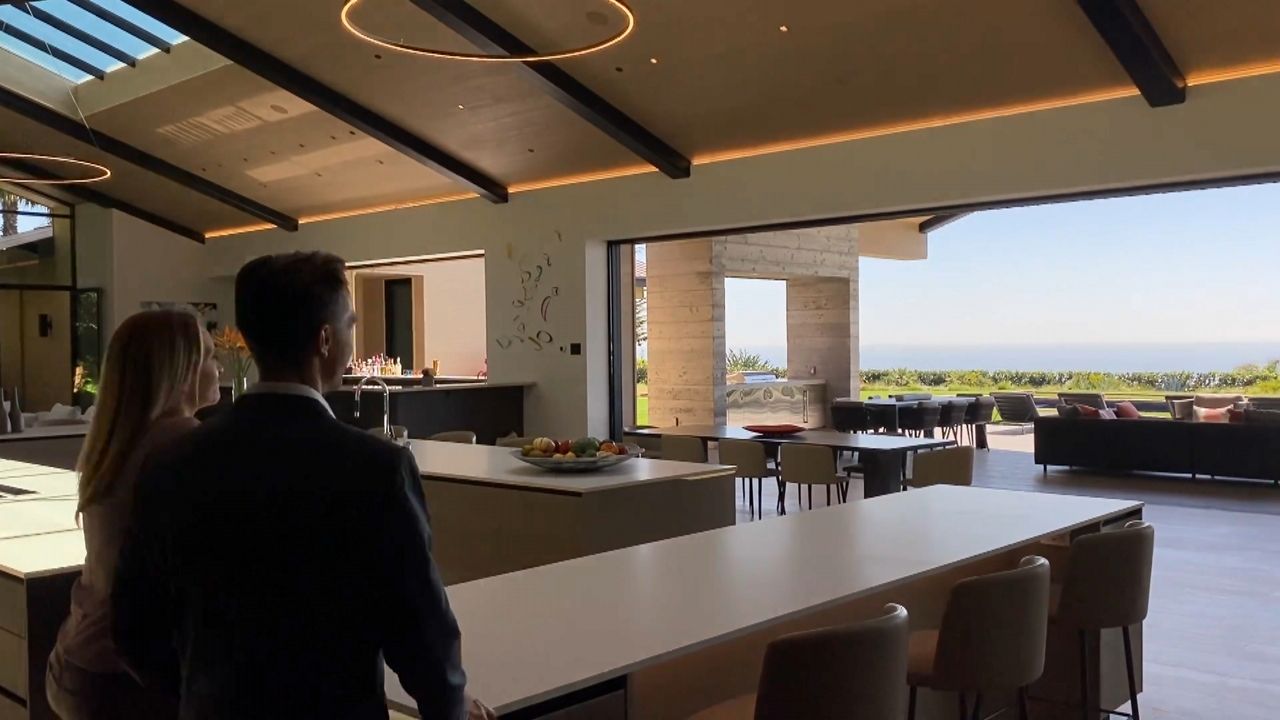MALIBU, Calif. — Lavish homes in Malibu are known for many things: extraordinary views, spectacular sunsets and very high prices.
Houses that dot the iconic California coast are perhaps less well known for their environmental sustainability. But one, known as Zero One Malibu, on the market for $32 million, combines it all.
The 14,429-square-foot house sits on 2.48 acres and is at the cutting edge of zero-carbon design.
“The building industry is currently a problem when it comes to CO2 emissions” said Scott Morris, the property developer of Zero One. Morris, who is director of carbon sequestration at MariSol Malibu, is merging high end luxury with an environmental mission. He studied conservation biology in college and after working in real estate, says he realized the industry needed to change.
The Zero One series of properties, is a collection of four homes that are all en route to being certified as zero carbon by the International Living Future Institute — a group, similar to LEED, that certifies buildings as zero carbon. The institute takes all carbon produced during construction into account. The house is 100% electric and uses renewable energy. The stove, heating and cooling systems are all gas free, as are the fireplaces built throughout the home — they’re an illusion of water vapor and lights.
Morris worked to replace materials, typically used during construction, like steel and concrete with wood and recycled rubber. Products like steel have high amounts of embodied carbon — large quantities of CO2 are emitted to extract, produce and transport it. 80,000 pounds of steel throughout the property was replaced with wood.
“Buildings have the unique ability to sequester CO2. One of the most prevalent structural materials is wood. Throughout its lifetime wood sequesters CO2,” Morris said.

The grounds surrounding the house are also designed to support the climate, with native species and a personal bee hive. An organic garden is bursting with fresh vegetables and fruits.
“We have four regenerative organic garden beds…regenerative farming has the potential to sequester tons of carbon, it’s just a small microcosm of that,” Morris added.
Morris worked with Jennifer Hoppel, president of Burdge Architects, to make the zero-carbon mission a reality.
“Frequently when we are detailing a home, one of our standard details is to use an inch and a half of light weight concrete, it diminishes the acoustics and gives you a better footfall,” Hoppel said. “Here, instead of an inch and a half of lightweight concrete we were able to use recycled rubber made from tires.”
According to the Environmental Protection Agency, 600 million tons of construction and demolition waste was generated in 2018 with 145 million tons ending up in landfill.
But Hoppel says, the high numbers don’t deter her, in fact, she sees them as an opportunity. “Because we are in one of the highest impact professions, that also gives an opportunity to make a greater change,” she said.
Morris acknowledges that the house is financially out of reach for most people, but he hopes some of their ecological practices get picked up by more developers.
“Our gauge of success is seeing other developers take ideas from this home,” Morris said. “We’re hopeful people can pick up things, they don’t have to build a home like this but there are things people can bring to their homes.”
CORRECTION: An earlier version of this story misstated the name of Burdge Architects. This has been corrected. (Jan. 13, 2022)



